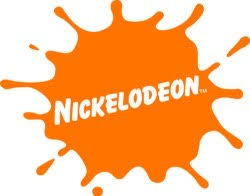Patterns in Film Success: Throughout Decades
In the past 20 years, there have been thousands of movies released to the public. Perhaps your favorite film is included in this timeline. From the likes of Star Wars to the Marvel franchise to the Twilight Saga, many of the most iconic films of this generation have already been released. While most are already well aware of the monetary success of these productions, something that may not have occurred to the average movie-goer are the visible patterns and commonalities shared between the most popular films over the past two decades. The list below includes the highest domestic grossing movie from each year between 2000 and 2019 which will be used to identify the patterns between them (Filmsite.org).
2000: How the Grinch Stole Christmas
2001: Harry Potter and the Sorcerer’s Stone
2002: Spider-Man
2003: The Lord of the Rings: The Return of the King
2005: Star Wars: Episode III – Revenge of the Sith
2006: Pirates of the Caribbean: Dead Man’s Chest
2007: Spider-Man 3
2008: The Dark Knight
2009: Avatar
2010: Toy Story 3
2011: Harry Potter and the Deathly Hallows, Part 2
2012: Marvel’s The Avengers
2013: The Hunger Games: Catching Fire
2014: American Sniper
2015: Star Wars: Episode VII – The Force Awakens
2016: Rogue One: A Star Wars Story
2017: Star Wars: Episode VIII – The Last Jedi
2018: Black Panther
2019: Avengers: Endgame
The first and potentially biggest pattern is one deemed the “popularity of the series”. Out of the 20 films listed, a shocking 17 of them are either part of a chain or some sort of continuation (sequel, trilogy, etc.) of an already existing series. Even more surprising, only three films on the highest grossing list are not part of a series, and stand alone without any continuation of their story. These three movies include: How the Grinch Stole Christmas (2000), Avatar (2009), and American Sniper (2014). There are many plausible explanations for this pattern. Perhaps one could be that people enjoy comfort, and they find comfort in viewing a film where they already know the characters, the plot, and are preliminarily aware that they enjoy the story that is being told. Another possible reason could be the franchise, and how publicized and promoted films are (i.e. Marvel, Star Wars, Hunger Games) when they belong to a series, as a particularly large fan base tends to form around them.
The next pattern can be identified as movies that are based off of books or written works. There are five movies on the highest grossing list that are derived directly from best selling books, including: How the Grinch Stole Christmas (2000) (derived from the book with the same name by Dr. Seuss), two movies adapted from the Harry Potter series by J.K. Rowling, one movie from The Lord of the Rings series by J.R.R. Tolkien, and one movie from the Hunger Games series by Suzanne Collins. However, there are an additional six movies included on the list that are based roughly on their comic book counterparts, five coming from the Marvel series and one from the Batman comic books (The Dark Knight). There is also one film which is based off of the true experiences that were previously depicted by Christopher Scott Kyle, a former Navy SEAL, in his memoir, “American Sniper: The Autobiography of the Most Lethal Sniper in U.S. Military History” (American Sniper, 2014). Finally, there is even an animated film (Shrek 2) that was very loosely based off of a children’s book by William Steig called “Shrek!”.
There are multiple other identifiable patterns that were not elaborated on, ones like: the marketability of “superhero” and Marvel films, the great difference between the prosperity of live-action movies versus animated ones, and the reoccurring genres of science fiction and fantasy. Just by viewing the list of highest grossing domestic films from the last 20 years, it is easily identifiable that there are many patterns between them. While one cannot say for sure, it is a great possibility that these patterns are what led to their success.
Grade 12
Interests - Involved in Chamber, Concert, and Girls choirs at Pennridge, acting choir president, spring musical, SADD club, Spanish club, Key...










